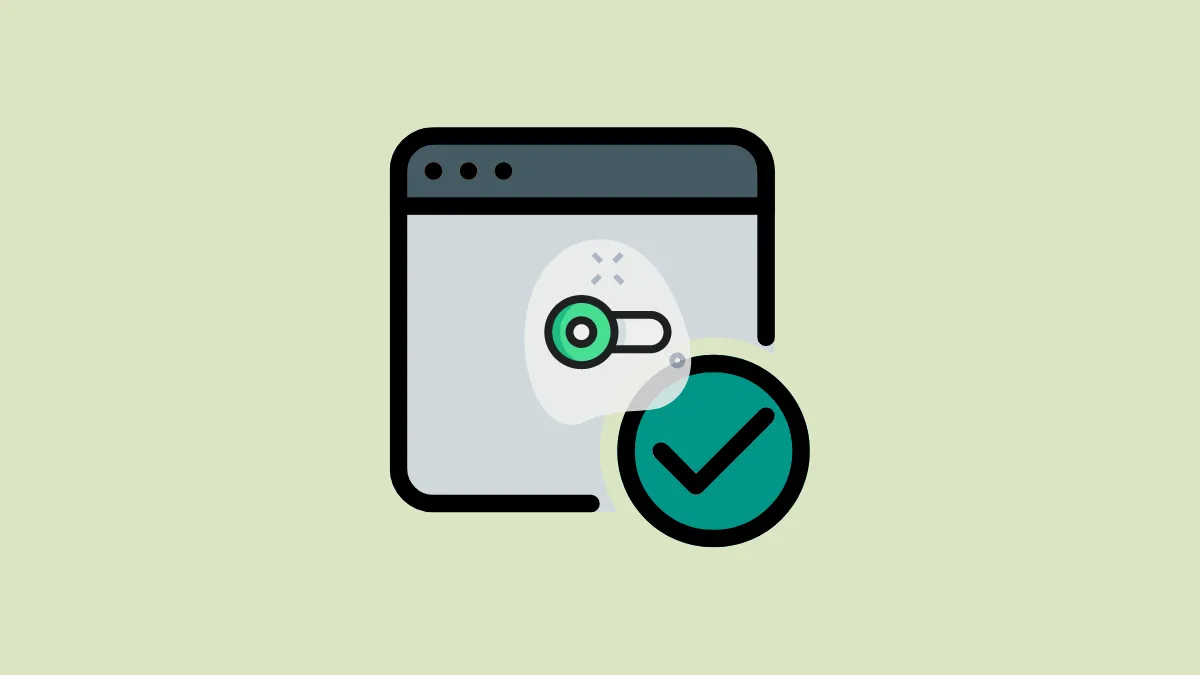When installing third-party applications on your Windows 11 computer, you might encounter a warning message: "The app you're trying to install isn't a Microsoft-verified app." This can be an obstacle when you need to install software that isn't available in the Microsoft Store. Fortunately, you can adjust your system settings to bypass this message and install apps from any source you trust.
Disable Microsoft-verified App from the Settings App
Step 1: Click on the Start button and select the Settings icon to open the Settings app.

Step 2: In the Settings window, navigate to the Apps tab on the left side of the screen.

Step 3: On the right pane, click on Advanced app settings.

Step 4: Under the Choose where to get apps section, click the dropdown menu.

Step 5: Select the Anywhere option from the dropdown list.

After making this change, you'll be able to install applications from any source without seeing the Microsoft-verified app warning. Be cautious when installing apps from the internet, and ensure they're from reputable sources to protect your system.
Use Group Policy Editor
If you prefer using the Group Policy Editor or need to apply this setting across multiple devices, you can disable the warning through Group Policy.
Step 1: Open the Start Menu, type Group Policy in the search bar, and select Edit group policy from the results.

Step 2: In the Group Policy Editor, navigate to Computer Configuration > Administrative Templates > Windows Components > Windows Defender SmartScreen > Explorer.

Step 3: In the Explorer section, locate and double-click on the Configure App Install Control policy.

Step 4: In the policy settings window, select Enabled. Under the Options section, choose Turn off app recommendations from the dropdown menu. Click Apply and then OK to save the changes.

After completing these steps, the warning message should no longer appear when installing apps from non-Microsoft sources.
Disable Microsoft Store Entirely
If you want to prevent access to the Microsoft Store altogether, you can disable it using one of the following methods: Registry Editor, Group Policy Editor, or Local Security Policy. This can be useful in organizational settings where installing new apps is restricted.
Using Registry Editor
Step 1: Open the Start Menu, type Registry Editor, and select it from the search results.

Step 2: In the Registry Editor, navigate to the following path:
HKEY_LOCAL_MACHINE\SOFTWARE\Policies\Microsoft\

Step 3: Right-click on the Microsoft key, select New, and then click on Key. Name the new key WindowsStore.

Step 4: With the WindowsStore key selected, right-click on the right pane, choose New, and select DWORD (32-bit) Value. Name this new value RemoveWindowsStore.

Step 5: Double-click on RemoveWindowsStore, set the Value data to 0, and click OK.

Restart your computer to apply the changes. The Microsoft Store should now be disabled.
Use Group Policy Editor
Step 1: Open the Start Menu, type Group Policy, and select Edit group policy from the results.

Step 2: In the Group Policy Editor, navigate to Computer Configuration > Administrative Templates > Windows Components > Store.

Step 3: On the right pane, double-click on the Turn off the Store application policy.

Step 4: In the policy window, select Enabled, then click Apply and OK to save the changes.

Restart your computer to apply the new policy. The Microsoft Store will now be inaccessible.
Use Local Security Policy
Step 1: Open the Start Menu, type Local Security Policy, and select it from the search results.

Step 2: In the Local Security Policy window, expand Software Restriction Policies, then click on Additional Rules.

Step 3: Right-click on an empty area in the right pane and select New Path Rule.

Step 4: In the New Path Rule window, enter the following path:
%programfiles%\WindowsApps\Microsoft.WindowsStore*
Set the Security level to Disallowed, then click Apply and OK.

Restart your computer to enforce the changes. Access to the Microsoft Store should now be blocked.
By following these methods, you can disable the Microsoft-verified app warning and even restrict access to the Microsoft Store if necessary. Always ensure that you trust the sources of the applications you install to maintain the security of your system.


